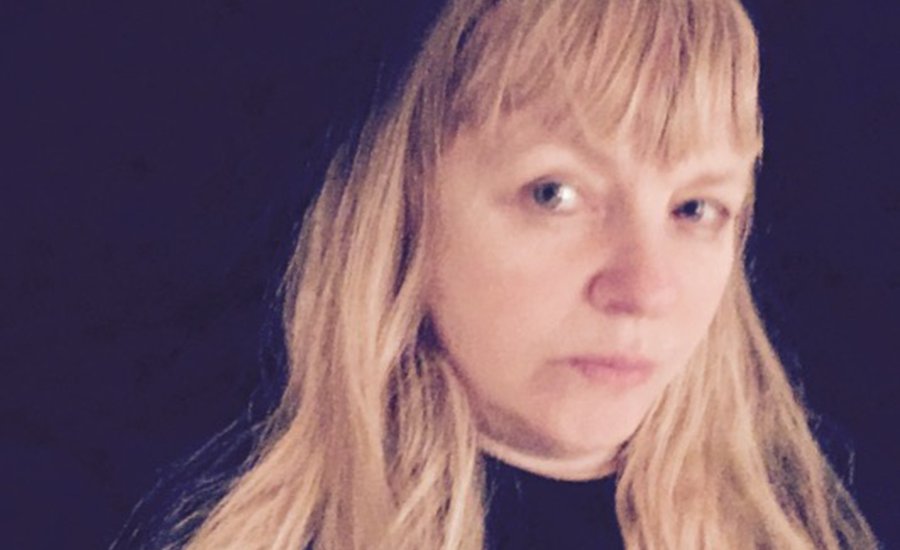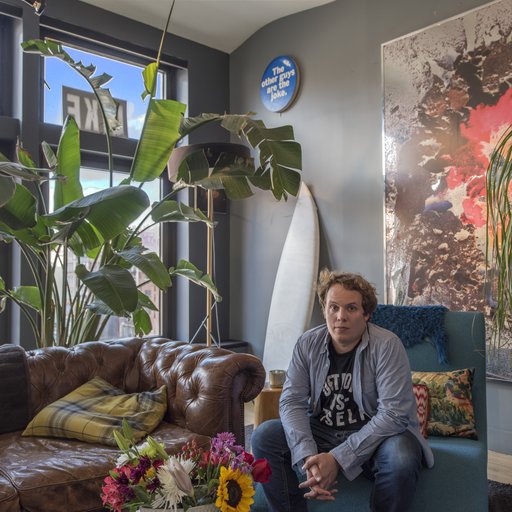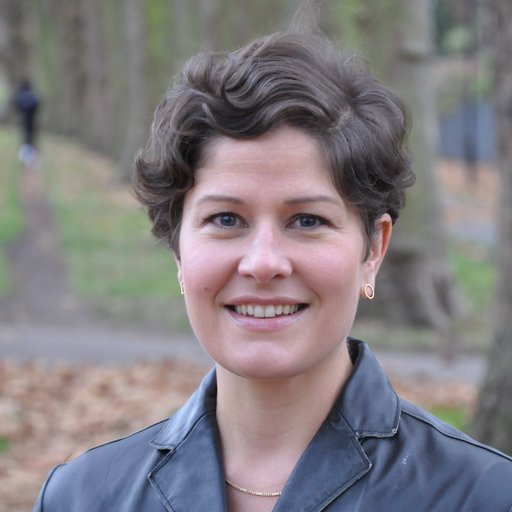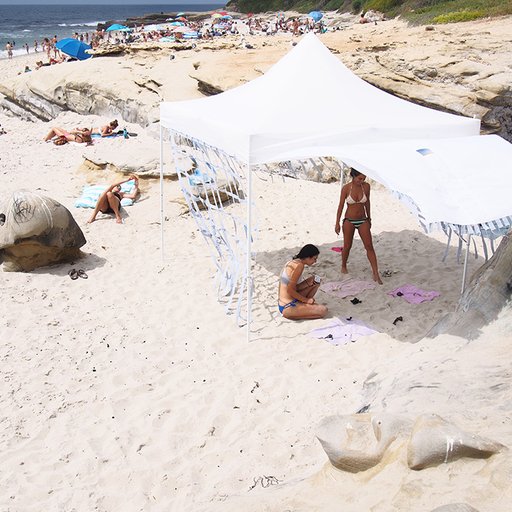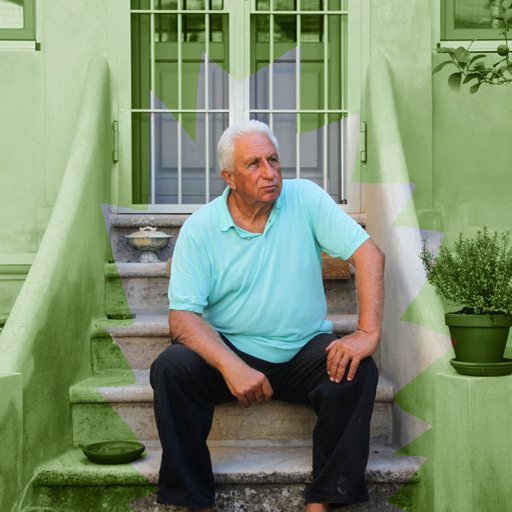Having curated major museum surveys with artists like Marina Abramovic, Louise Bourgeois, Dan Graham, Sol LeWitt, Donald Judd, and Yoko Ono, Chrissie Iles is known to most as a big-league curator, working with big names and big budgets at The Whitney Museum of American Art. But to the emerging artist community, Iles is the champion of young artists, especially those whose work might be too “difficult” or unsaleable for the market-driven gallery system.
Here, Iles speaks passionately about her excitement for a radicalized future, about how and where she goes to discover emerging talent outside of the commercial gallery circuit, and defines what she believes is our current art historical period.
When and where did you start curating and how did you end up becoming a part of the Whitney?
I started curating when I left university in England. I came upon an alternative space in an old warehouse with artist studios and a gallery called the Waterloo Gallery. I had never curated before but they liked my ideas and invted me to program the space. I raised my own salary from little bits here and there. From the beginning, I was very interested in this proximity between the artist’s studio where the work is made and the gallery space where the work is shown, and what role the curator had in that. I was also interested in minimizing the curatorial distance from the work and the artist, while at the same time not imposing any ego onto it. Instead, I just tried to make visible what artists were doing. That program was very successful but we lost the building; it got demolished.
I then worked at Matt's Gallery. Robin Klausnik, an artist, had turned his studio into a gallery, and instead of installing a show for a week and open for a couple of months, he would invite each artist to work in the space on something site specific for three months and the show would be open for two weeks. It fostered a very intimate relationship between the artist, the artwork, and the public. After a while, I wanted to see if I could bring what I had learned into a museum situation without being muffled by the institution. I basically wanted to see if I could change the institution from inside out in terms of the way in which history is written, the way in which shows are made.
I went to the Museum of Modern Art in Oxford that at the time was directed by David Elliott who is a wonderful scholar, an incredible thinker, and very open. He'd visit many of the international academics and philosophers who came through Oxford, and he would take me with him, rather than having me hold the fort while he went, he'd take me with him. So I met Umberto Eco, Griselda Pollock, Baudrillard, Noam Chomsky, and Isaiah Berlin, as well as scientists. I absorbed the rich intellectual environment of the university and it became an important part of my work.
I became very interested in the moving image and David Elliott was incorporating film into the programming, curating an Eisenstein retrospective and then a Phillip Guston painting show. He didn't see the two as being separate—they were both part of a larger visual culture. That taught me to have a very integrated approach. I also surrounded myself with an older generation visionary curators who were rigorous, fearless, and very critical of each other. They would just shoot any weak idea down in flames and tell you why. I learned from them to be rigorous and to question everything. There's a lot of hyperbole in the art world and especially in New York; you have to cut through it to the things that really matter.
I haven't heard that perspective before—that people in New York tend to be particularly hyperbolic. What do you mean by that?
In New York I hear adjectives like "amazing!" used all the time to describe things that are B-list or just okay. There are very few things that are really art-historically significant and deserve that kind of praise. It's fine to have mediocre art, just don't call it anything else but. I think the art world needs a heavy dose of honesty in terms of how everyone talks to each other about the work. There's too much hot air and hyperbole and false emotion.
So why and how did you end up in New York?
The more time I spent in New York the more I realized how much it had to offer curatorially, in terms of both contemporary artists and art history. I wanted to be here all the time and the Whitney was the place I wanted to be because it is so artist-driven, and it would allow me to continue my instinctive desire to be close to artists.
In England, I had curated a large thematic group show called "Signs of the Times: Film, Video and Slide-Tape in Britain in the ‘80s" and a thematic contemporary art show, "Scream and Scream Again: Film in Art.” I saw how much projected image installation was being ignored in America, including fantastic pieces that even the artists themselves had forgotten about, sometimes because they had returned to the studio after having such a hard time showing that work. The exhibitions that I did drew the attention of David Ross, the Whitney director at the time, and he gave me the job. I started to think about how I could build the Whitney's holding of moving-image work in all its forms from every decade to build a history of the moving image in American art.
I'm a risk taker and I'm very confident about young artists whose work I think is strong. I have no doubt about showing it and bringing it in to the collection. The Whitney is historically known for bringing artists in at a very early stage, including out of Biennials, without waiting for them to "prove" themselves. I've recently brought in work by artists including Ivana Bašić, Andrea Crespo,,Ben Thorp Brown Ja'Tovia Gary, Frances Bodomo, Ian Cheng, Rachel Rose, Lorna Mills, Adelita Husni-Bey, Andrew Norman Wilson, Cécile B Evans and have been building our holdings of work by young Afrofuturist artists and filmmakers.
Why do you think the collection had been so lacking in video and film?
Most museums did not historically focus on film and video. This has changed dramatically in the last decade. Most museums’ moving image collections started in the late ‘90s when galleries began selling video installation—and the works are all video, with almost no film. Museum collections don't tend to include works that do not gp through the gallery system, so art history is being written through a particular lens. So one thing that maybe distinguishes the way I approach things is that I look everywhere and in every direction for things that are art historically significant. Some of the works that I bring in to the collection don't come in through the gallery system - avante garde films, expanded cinema installations, performative durational, emphemeral works. Every artist has picked up the moving camera since the moving camera was invented, so I have paid attention to that, finding little-known works such as a three-screen film installation by Roy Lichtenstein, which we showed then brought it into the collection.
I'm very interested in those lost histories. I am working on re-presenting Invisible Cinema for the first time since 1971 with Jonas Mekas, Peter Kubelka, and Microscope Gallery. The idea is to build a kind of flat-pack version of it so that you can put it up and take it down. It's a cinema with blinders on each seat so you can't see the person next to you and black velvet walss and a black floor, creating complete darkness. What you see on the screen is apparently almost hallucinatory because it's so intense. Most cinemas are not pitch black at all. We would be the first museum in the world to own the cinema as part of the collection as an artwork. I want to update the original film program by adding young women and LGBTQI artists to disrupt the white male voice, an idea that Jonas Mekas supports. In all my curating, I'm working with historical works and with very young artists. Everything is contemporary in its time.
How do you see the relationship between the museum and the market?
The gallery circuit and art fairs are important, but they are just one part of the art world. I think there's a major problem with the way in which this hyper-capitalist environment has created a situation in which artists feel pressured to sell work in order to survive. Until recently, selling work was not something you aimed for. You aimed to make important work. If you aim to make money through your work you'll never make art that's important. And the price of an artwork does not necessarily reflect its art historical importance. I'm not against the market at all, but it's important to remember that something is not necessarily historically significant just because it’s successful in the market.
So where do you go to see art that’s outside of this market-driven gallery scene? How do you find the young artists that you end up championing?
I spend most of my time with artists, and I listen a lot to the things that are important to them, what they're talking about, who they're looking at. Sometimes I’ll check something out because an artist friend mentioned it or they're in a show where I'll meet other artists. I go to galleries in the Lower East Side, Brooklyn, Queens, Long Island City, Red Hook; and I'm interested in places like the SculptureCenter, which give many young artists their first showing. I think MoMA PS1 does a good job curating of very young artists. I go to Hotel Art Pavilion, Motel, Orgy Park, SIGNAL, Secret Project Robot, Interstate Projects... I go to a lot of one-off, one-night-only events in backyards or someone's studio, new galleries, pop up galleries... I go to pretty much everything I can find and I like being very low key. I don't see what I do as some kind of scouting; I see it as part of an ongoing dialogue with artists.
I also am interested in the rawness of what happens before people pay attention to an artist, because the mechanism of the art industry can dissipate that raw energy in the work. We all have the potential to just become cogs in a machine. There’s currently a problem with mid-tier galleries not being able to afford to continue, and younger galleries becoming frustrated with the system. My approach to young artists tries to avoid those traps. Art is a very long game. Not everyone can produce art into their 70s or 80s and that's fine. I think if you produce a body of work that's very strong for a decade—whether it's in your 20s or your 30s or 40s—you can make a great contribution to art history. If you look at the reality of the way in which art history unfolds, important work is found over a long period of time, sometimes way after it was first made, and ends up in museums, which is key, because museums are scholarly archives, and the only place where art can be seen and studied way beyond its time.
That's why there's a deep responsibility to the way in which museums write art history or histories. Like history itself, art history is constantly being rewritten. I’m thinking about the Dana Schutz situation. In 30 year’s time, everyone will understand that was an important art historical moment which is resulting in deep reflection and learning.
This is a museum of American art in its broadest sense: art made in America. So what does that mean? America is a big social experiment. It's anarchic, it's corrupt, it's extraordinary and freethinking. It's so many paradoxical things. What I'm looking for is strong art that says something about our time and that will also sustain its meaning and power across time. I'm interested in the speed in which things are moving, which is partly because of social media. Part of our hyper-capitalist decline is a need for stimulation. It's overwhelming. I'm interested in both finding interesting work from it all and I'm also interested in what happens when that moment dies down and people move on to the next thing. What stays when the charisma of the artist or the person showing the work or the values of the collective community change?
So what are artists talking about now? What are the things that characterize our current moment in art history and can you articulate what sort of “period” we are in right now?
I think that we can say that there's an art historical period that began around 2008 with Occupy and the economic collapse, and ended when Trump was elected. I think what’s important to artists in this period are issues like global warming, the Anthropocene, A.I., and the shift from a human-centric world into something that also includes post-human and interspecies presence. And obviously political activism, whether it's Nick Faust with health care, AIDS and Act Up, Black Lives Matter, which has been a critical issue for a long time but has become very urgent in the last 18 months, and has entered the art world in a way that I find very important. Indigenous, Native American voices are also becoming stronger; the Standing Rock protest really brought that to people's attention. The Women's March had a big impact as well; there is a sense that these issues are deeply important and urgent, and that we all have to act and respond, and there is a seriousness and committment that is having a powerful impact on our culture and our thinking.
Museums move more slowly than a small alternative space—but they have been responding relatively fast to the current situation. Look at the way MoMA rehung its collection after the immigration ban. That was a great hang! And the question is: why wouldn't those works be there all the time next to the Picasso and everything else. And I think they probably thought so too, like "Wow, this has also really taught us something about the way in which we need to rethink and show our collection." We're learning all the time. There’s an openness which is accelerating as we respond to artists and the public and what the community is saying—as you can see with the recent Dana Schutz situation. The institution listens and is responding and changing; it is not monolithic.
All these issues were in 2008. Occupy came out of the anti-global movement of the early 2000s immediately around 9/11; but it has a new urgency now, because of the current repressive political environment. The community and the culture are acting in a newly urgent way because the situation demands it. That's going to continue until something changes. The unaffordable rents and the homogenization, commercialization, and commodification of social space are driving people to think of alternative ways to make and show work. Everything is driven by money and power. How do we operate as an artistic community? I think by breaking binaries on every level from gender, politics, money, and sexuality to space for showing work, the dialogue is diversifying in a way that I think is really healthy.
Are you at all worried for the future of the art community in New York? If rents continue to rise, and it becomes harder and harder to live in this city, are artists at risk? Or is there a breaking point to all of this?
I think something will break but I don't think it will be the spirit of the artists or the community. I think it will be the stranglehold that breaks. Most people cannot afford rent beyond a certain point and you can only have a certain number of roommates and you can only go into debt for a certain amount of time. I think what's in the future is that A.I. and universal income. I think that we're lacking political leadership from a younger generation. Bernie Sanders broke the mold. What was remarkable about Bernie Sanders was the fact that he’s a much older white male who appeals to a young generation of voters through a New Deal kind of politics. That seems like the beginning of a shift that might be about to occur in politics as members of the young generation start to become political players who can take on the corporate control of government. I think that there will be a breaking point when A.I. takes over people's jobs in 20 years time, creating the need for a universal income. It will be interesting to see how that impacts artists and rents and real estate and all the rest of it.
I think that the current artistic community is too strong in their determination to allow everything to crush them. I think another turning point is going to be education because this level of student debt is just untenable. There's already been a drop in higher education applications to universities in England because fees have gone up. People are starting to think, "Well maybe we don't need college. Maybe we'll just read books at home. Maybe we'll form another alternative system of educating ourselves because we can't afford to go into debt." The education system may be shaken up by that. Young adults who were brought up by parents who allowed them to have a say in the decision-making around the family are coming into the market place and the work world and challenging the hierarchical, male-dominated system; they want to work in a different way and are already starting to create alternative models.
I think we're on the cusp of very radical social changes and therefore cultural changes. We can't anticipate what they are but we're in an important transitional moment. I think it is similar to what was going on in the ‘60s and every bit as problematic politically and culturally. I like the fact that people are feeling very angry about it and determined to try to figure out ways of counteracting it. That necessitates a level of collaboration and community that goes against the attempt to homogenize everything that the art world has been pushed towards. Here in the museum, we emphasize research and a direct dialogue with artists. We're building something the long-term.











